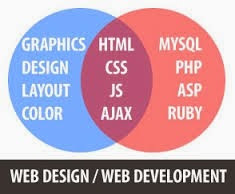What are static and dynamic websites?
There are many static websites on the Internet, you won’t be able to tell immediately if it is static, but the chances are, if the site looks basic and is for a smaller company, and simply delivers information without any bells and whistles, it could be a static website. Static websites can only really be updated by someone with a knowledge of website development. Static websites are the cheapest to develop and host, and many smaller companies still use these to get a web presence. Here at Soft Cybernet web development, we can advise or help to develop both static and dynamic websites.
Advantages of static websites
· Quick to develop
· Cheap to develop
· Cheap to host
Disadvantages of static websites
· Requires web development expertise to update site
· Site not as useful for the user
· Content can get stagnant
Dynamic sites on the other hand can be more expensive to develop initially, but the advantages are numerous. At a basic level, a dynamic website can give the website owner the ability to simply update and add new content to the site. For example, news and events could be posted to the site through a simple browser interface. Dynamic features of a site are only limited by imagination. Some examples of dynamic website features could be: content management system, e-commerce system, bulletin / discussion boards, intranet or extra net facilities, ability for clients or users to upload documents, ability for administrators or users to create content or add information to a site (dynamic publishing).
Advantages of dynamic websites
· Much more functional website
· Much easier to update
· New content brings people back to the site and helps in the search engines
· Can work as a system to allow staff or users to collaborate
Disadvantages of dynamic websites
· Slower / more expensive to develop
· Hosting costs a little more
Summary
Many sites from the last decade are static, but more and more people are realizing the advantages of having a dynamic website. Dynamic websites can make the most of your site and either use it as a tool or create a professional, interesting experience for your visitors.
This article aimed to tackle some of the questions faced by website owners. If you'd like to comment on this article or have any questions, please contact us.
Our Website is Soft Cybernet.
We provide services such as seo services
web design services
ecommerce website designing services
smo services
online reputation management services
psd to html and css conversion services
banner design services
you can email us on info@softcybernet.com
 RSS Feed
RSS Feed Twitter
Twitter 04:51
04:51
 Unknown
Unknown













